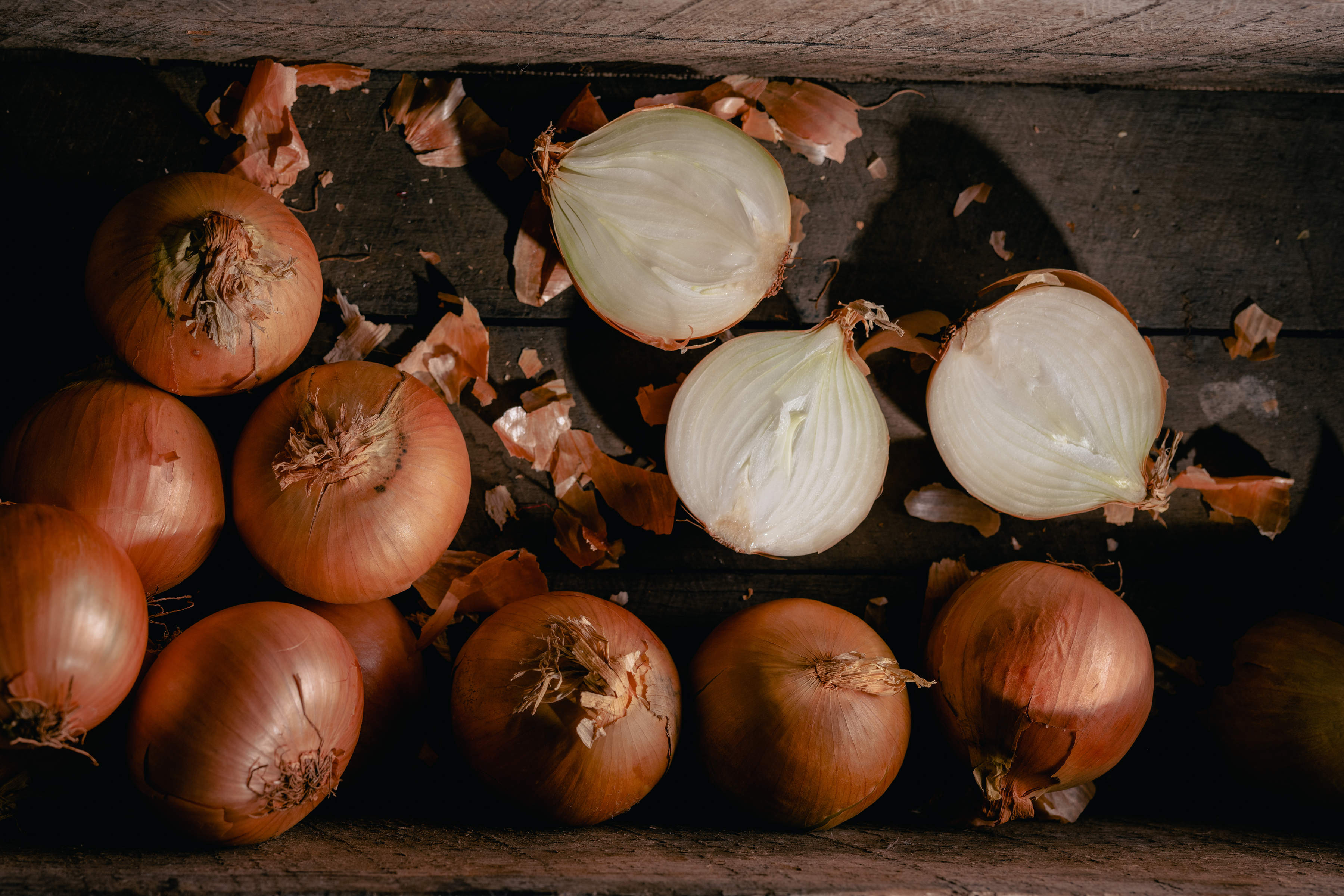
Tim Groom of Wynyon
Read more

Tasmania produces onions of exceptional quality. These are shiny, firm and crisp and store particularly well.
Fertile rich, vocanic soils and cool climate allows onions to grow slowly, ensuring good flavour. This, together with an abundance of clean water during the growing period, ensures sweetness, crispness and a longer shelf life.
Tasmanian onion production annually is worth $74 million and contributes 22% of national production. Some 53% of Tasmania’s production is sold in export markets.
Key markets for Tasmania are Thailand, Malaysia, Taiwan, Netherlands and Belgium.
The largest concentration of regional growers is in the Central North West where the majority of vegetable packing and processing operations are based.
November–May
Onions are harvested in these months but available until September for export
brown, white, red and shallots
56,831MT
$74M
29,981MT
Trade data source Australian Horticulture Statistics Handbook 2022/23
Being a remote island surrounded by water and aided by a robust biosecurity system, Tasmania remains free from many plant-related pests and diseases. This freedom means our produce can be exported with minimal, if any, phytosanitary treatment.
Tasmanian onions are grown predominantly in the Central North West, North East and Northern Midlands regions of the state.
“Our healthy Tasmanian volcanic red soils and cool growing seasons enable us to produce premium vegetables that are very flavoursome and firm, allowing our produce to store and be exported with excellent outcomes for the purchaser.”
Tasmania’s relative pest free status offers trade opportunities for importing countries seeking access to Tasmanian grown produce.
This information is extracted from the Department of Agriculture Fisheries and Forestry’s Manual of Importing Country Requirements which is frequently updated. Please validate this information before proceeding further.
The importing country has no phytosanitary restrictions for entry into the market.
Open to Tasmania, without requiring any phytosanitary treatment.
Open to Tasmania but requires some phytosanitary treatment.
No arrangements have been developed to make trade between the two countries possible, or trade is currently not allowed.
Through the generations our growers feel the pulse of the seasons and heartbeat of this land. They understand what thrives here — they take the time to grow produce with care. Meet some of our passionate, committed and knowledgeable Tasmanian growers…
Submit your interest and we will share your details with Tasmanian growers.